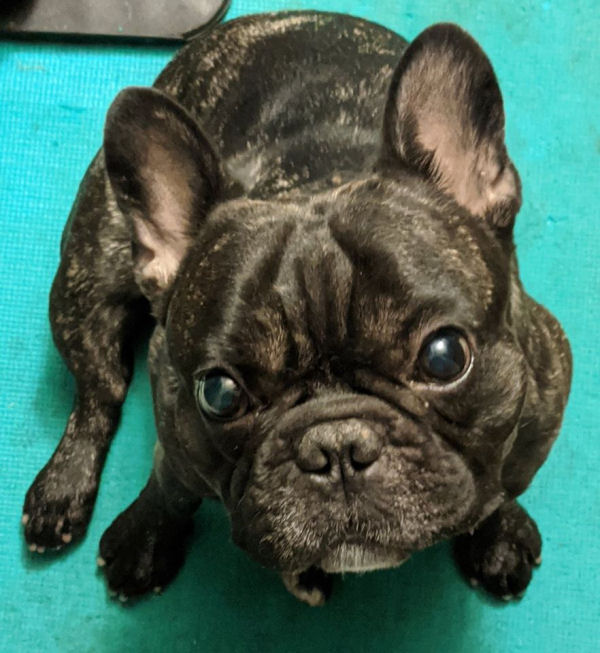One of the best ways to encourage your dog to be curious and make good decisions is to play “Step On It!”

It’s pretty much exactly what it sounds like. And it’s always a bit of a shock when we introduce it in our puppy classes. The people who thought their puppies were bold, naughty explorers are surprised when their puppies are reluctant to try it.
The more the merrier
The game is simple to play and you can do it with anything, anywhere. You can play it one item at a time, or have a few stations set up to play.
Get some varied, flat materials. We use bubble wrap, cardboard, cookie sheets, yoga mats, wire grating, mesh screening, aluminum foil. The bottom of the item has to be flat, but you can certainly use boxes or, this week in particular, foil roasting pans are a great choice.
Have your dog on collar or harness and leash, just so they don’t leave the play area. Many dogs will disengage and “check out” when they don’t know what’s expected of them. Especially if your dog has been conditioned that you always tell them what to do, they’ll be reluctant to try new things.
How to play
Basically, you stand by the flat object, clicker in one hand, treats in the other, and that’s about it. To free up your hands, you can step on dog’s leash, giving him/her lots of slack, but not able to leave the area.
Click and reward for any interaction your dog shows with the object. If he/she looks at it, even a passing glance, try to catch the moment, click and reward. Up until now, the game is similar to “Boxey.” Toss the treat on the object, rather than feeding from your hand. We want the dog focused on the thing, not on you for this game.
If the dog looks at the object, click, and toss. Up to three times. By all means talk to your dog, encouraging him/her to “check it out,” “go see,” “what’s that?”
After your dog has been rewarded three times for looking, ask “What else?” It’s time to ask for more. If your dog has taken the treats tossed on the object, it’s already a little bit familiar and they should be ready to sniff it, paw it, step on it, etc.
Asking for more
For each advance, reward no more than a few times before asking for more. You can either use one object at a time, keeping the sessions very short, or set up a few different things so your dog learns to generalize exploring different things.
Don’t worry if your dog doesn’t get very far the first time. Familiarity with the game will encourage them to try the next time.
If your dog doesn’t engage with the object at all, just lean over and stare at it. This is where the hardest part of dog training comes in – doing nothing. It’s really difficult to just stand there, talking to your dog, and wait for them to get with the program. We understand. But you can do it, and your dog will learn more and better if you’re patient. Resist the temptation to lure your dog to the thing by tossing the treats on it or in it. We’re rewarding, not luring. The difference is teaching your dog to make good decisions, instead of just following commands.
Goal of the game
Eventually, the game’s objective is to get your dog to either stand or sit completely on the flat object, whatever material it’s made of, whatever noise it makes, wherever it is. This is a confidence-building game that’s particularly beneficial for dogs that tend to be timid or wary. It encourages them to explore their world, knowing that you’ll be right there, side by side.






